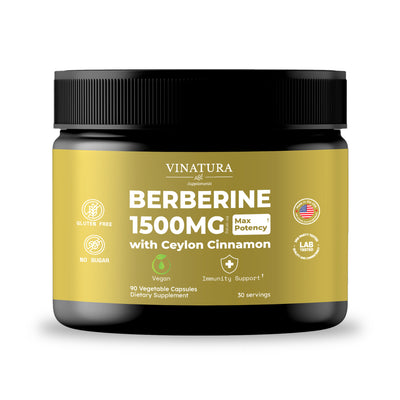
Blessed Thistle Vs Milk Thistle: Are They The Same?
It is likely that at least once, we have been confused between blessed thistle and milk thistle.
In fact, these are two types of herbs that are often confused due to their similar names. However, blessed thistle and milk thistle are two different plant species with distinct characteristics and benefits.
This article will provide you with a comprehensive overview of both herbs, helping you decide whether to use Blessed Thistle or Milk Thistle in your nutritional regimen.
Before exploring further, please read the disclaimer located at the end of this webpage.
Key Takeaways
- Blessed Thistle is renowned for its potential benefits in supporting digestion, immune function, and lactation.
- Milk thistle is widely used for its ability to protect the liver, its antioxidant properties, and its potential benefits for people with diabetes.
- The daily dosage of Blessed Thistle is 4g-6g, while for Milk Thistle, it is 200mg - 600mg. However, the dosage of both may vary depending on the intended use and the form you are using.
Is Blessed Thistle the Same as Milk Thistle?
Blessed thistle and milk thistle are two different plants. Although both are beneficial herbs, they have distinct characteristics. Each type has its own advantages. Understanding the differences between them will help you know when to use which herbal supplement to complement your health.
Understanding Blessed Thistle

Blessed Thistle's Botanical Name
Blessed Thistle's scientific name is Cnicus benedictus.
Appearance of Blessed Thistle
Blessed Thistle is a plant native to the Mediterranean region. This thistle plant has multiple branching stems, resembling a cactus, with hairs and sticky resin. The leaves are oval-shaped, cone-like, serrated, and have prickles and prominent veins. The flowers are light yellow, stalkless, located at the top of the branches.
The tube flowers, located at the sides, have a three-part rim and are much smaller than the composite flowers.
The outer calyx is egg-shaped. The inner leaves end in a long, stiff spine, with small leaves at the top.
The outer leaves end in a single, wide spine and are connected to the small heart-shaped sepals by many web-like fibers. The fruit has a hairy root.
Traditional Uses of Blessed Thistle
Blessed Thistle has been used for centuries in traditional medicine. The thistle plant is used to stimulate appetite, increase bile secretion, promote liver function, and support digestion in the body.
Moreover, it is also used to support the female reproductive system and increase breast milk production after childbirth, ensuring an adequate milk supply for the baby.
Additionally, this herbal remedy can be used to alleviate bloating and digestive disorders, as well as in cases such as antiemetic, left gastric pain, and other digestive-related symptoms [1].
Potential Health Benefits of Blessed Thistle
Digestive Support
Blessed Thistle may stimulate digestive function by enhancing bile secretion and liver bile release, helping the body function more effectively in the digestive process [1]. Blessed Thistle is also commonly used to help improve digestion and reduce symptoms of indigestion, bloating, and digestive disorders.
Immune Boost
The flower extract of Cnicus benedictus has been studied for its antibacterial effects. This extract has shown the ability to inhibit bacteria, including methicillin-resistant Staphylococcus aureus.
The sesquiterpene lactones clinician and chloropicrin have been identified as potent inhibitors of the bacterial enzyme MurA [1]. Therefore, Blessed Thistle may help the body to have a strong antibacterial defense, thereby enhancing the immune system.
Using Blessed Thistle can help the body to quickly respond to harmful substances invading the body and minimize the damage caused by diseases.
Anti-Inflammatory Properties
Currently, Blessed Thistle has also been researched for its potential anti-inflammatory effects by inhibiting inflammatory processes in the body.
Some studies have demonstrated that compounds in Blessed Thistle may reduce the production of inflammatory cytokines and inhibit the activity of inflammatory factors such as NF-κB [1].
Lactation Support
Blessed Thistle can be used to increase breast milk production for nursing mothers. Nowadays, it has been applied in safe herbal products to increase breast milk supply in breastfeeding mothers.
Other Potential Benefits
Blessed Thistle is also used for wound healing. It is manufactured as a topical cream containing powdered root of Cnicus benedictus to heal wounds.
A study conducted over 14 days using this ointment compared with other treatment creams showed that the cream containing the powdered root of Cnicus benedictus could accelerate the wound healing process faster than other treatment creams,, achieving a wound reduction rate of up to 98.81% [1].
Blessed Thistle's Risks and Side Effects
Although Blessed Thistle is less commonly associated with allergic reactions and adverse effects following therapeutic dosages, there are still reports of its risks and side effects.
Individuals allergic to other members of the Asteraceae family (such as feverfew, chamomile, or Echinacea) should exercise caution with Blessed Thistle due to the potential for allergic cross-reactivity with plants in the Asteraceae family.
Stomach upset may occur with very high doses (over 5 grams per cup of tea), and you may experience nausea and fatigue.
Blessed Thistle should not be used during pregnancy as it may cause miscarriage.
Understanding Milk Thistle

Milk Thistle's Botanical Name
Milk Thistle is scientifically known as Silybum marianum (L.) Gaernt., also referred to as Cardus marianum L.
Appearance of Milk Thistle
Milk Thistle is a biennial or annual plant belonging to the Asteraceae family, reaching heights of up to 1.5 meters. Each fruit is approximately 5–7 mm long, 2–3 mm wide, and 1.5 mm thick, with a shiny dark brown to gray-brown husk.
Traditional Uses of Milk Thistle
In the past, Milk Thistle has been used to treat liver and gallbladder disorders such as hepatitis, cirrhosis, and jaundice. Additionally, it protects the liver from chemical and environmental toxins, including snake bites, insect stings, mushroom poisoning, and alcohol.
Moreover, it has been used to stimulate milk production and bile secretion, treat depression, and provide protection against the poisonous mushroom Amanita phalloides [2].
Potential Health Benefits of Milk Thistle
Liver Protection
Milk Thistle is known as an herbal remedy that can protect the liver from damage caused by chemical and environmental toxins, including alcohol, snake venom, and poisonous mushrooms.
A study examined the effectiveness of silymarin (the main component of Milk Thistle) in counteracting or preventing harmful effects on the liver caused by tacrine, an acetylcholinesterase inhibitor used in Alzheimer's disease treatment.
The results showed promising effects when using Milk Thistle for treatment [2].
Another study by Ferenci et al. aimed to determine the effects of Milk Thistle on patients with cirrhotic liver disease.
The study involved 170 patients with cirrhosis, of which 87 were treated with silymarin, and 83 were given a placebo.
The survival rate in the silymarin-treated group was higher than in the placebo group, especially in patients with alcoholic cirrhosis [2].
Milk Thistle also has the ability to increase protein synthesis, aiding in faster liver recovery after injury and stimulating the regeneration of new liver cells.
Antioxidant and Anti-Inflammatory Properties
Milk Thistle exhibits anti-inflammatory effects and modulates the immune system. It helps protect the liver by inhibiting inflammatory reactions and reducing the production of inflammatory substances.
The main component of Milk Thistle, silymarin, also protects the liver by neutralizing free radicals and reducing oxidative stress [2].
Moreover, silymarin in Milk Thistle inhibits the activity of certain proteins and genes related to liver inflammation, thereby reducing liver damage and supporting the immune system [2].
Thanks to these properties, Milk Thistle is widely used in the treatment of liver diseases, including hepatitis, cirrhosis, and liver infection.
Potential Benefits for Diabetes
Patients with diabetes and chronic liver disease often exhibit insulin resistance and impaired insulin regulation. The prevalence of diabetes is higher in patients with hepatitis C-related cirrhosis (23.6%) compared to hepatitis B-related cirrhosis (9.4%).
Studies have shown that taking Milk Thistle (600 mg/day) for an extended period significantly reduces fasting blood sugar levels and insulin requirements [2].
Milk Thistle may help reduce liver cell damage and improve insulin utilization, which can aid in better blood sugar management and reduce the risk of diabetes-related complications.
Other Potential Benefits
Milk Thistle has the ability to lower bad cholesterol (LDL) levels and increase good cholesterol (HDL) levels, thereby reducing the risk of cardiovascular diseases.
With its strong antioxidant properties, Milk Thistle can protect the skin from the harmful effects of UV rays and free radicals, helping the skin become healthier and preventing aging.
Moreover, Milk Thistle may also help improve digestive function and reduce digestive disorders such as bloating and indigestion.
Milk Thistle's Risks and Side Effects
Reports indicate that Milk Thistle has no side effects at a single dose of 254 mg of silybin.
Patients with liver disease taking silymarin (600–800 mg/day) for 6 months also experienced no side effects.
Around 3500 patients, including 2637 with liver disease, taking Legalon (560 mg/day) for 8 weeks reported a 1% incidence of side effects, mainly passing digestive symptoms such as bloating, nausea, indigestion, and diarrhea.
Using Milk Thistle at doses higher than 1500 mg/day may cause laxative effects.
Rare side effects include sweating, abdominal cramping, nausea, vomiting, diarrhea, and fatigue. Milk Thistle is considered non-toxic at doses of 240-900 mg/day. However, it should be avoided by individuals allergic to the Asteraceae family.
Moreover, if you have a history of hormone-related cancers, you should avoid using Milk Thistle. These cancers may include breast cancer, uterine cancer, and prostate cancer, so be cautious when deciding to use Milk Thistle.
Key Differences Between Milk Thistle and Blessed Thistle
Here is a comparison table outlining the main differences between Milk Thistle and Blessed Thistle:
|
Characteristic |
Milk Thistle |
Blessed Thistle |
|
Scientific Name |
Silybum marianum |
Cnicus benedictus |
|
Appearance |
Can grow up to 1.5 - 3m tall, with purple flowers, the entire plant and leaves have small spines. Seeds (fruits) are shiny, black or gray. |
Herbaceous plant with green leaves (similar to dandelion) and yellow flowers. |
|
Traditional Uses |
Protects the liver, antioxidative, supports diabetes treatment |
Supports digestion, increases milk production, supports the immune system |
|
Main Active Compounds |
|
|
|
Potential Health Benefits |
Anti-inflammatory, supports cardiovascular health, protects the skin, anti-cancer |
Reduces inflammation, supports digestion, increases milk secretion |
When to Use Each Thistle?
Blessed Thistle for Digestive Issues and Immune Support
Blessed Thistle is primarily used to address issues related to digestion and support the immune system. If you are experiencing digestive issues and want to boost your body's immunity, then Blessed Thistle would be a better choice than Milk Thistle. Digestive problems may include indigestion, diarrhea, acidity, poor appetite, bloating, etc.
It's also a good option for breastfeeding mothers who want to increase milk production for their babies because Blessed Thistle can increase milk secretion in women.
Milk Thistle for Liver Protection and Antioxidants
Milk thistle is often used to protect the liver and as an antioxidant.
Suppose you want to enhance liver health and protect the liver from harmful agents both internally and externally. In that case, you should use Milk Thistle.
This herb can prevent liver inflammation, support liver cell regeneration, and improve liver function.
And suppose you're looking for support for your body against harmful environmental factors. In that case, you should also choose Milk Thistle or Blessed Thistle. Milk Thistle contains Silymarin, which has antioxidant properties, helping to protect liver cells from damage caused by free radicals.
Safety and Dosage of Milk Thistle and Blessed Thistle
General Safety Considerations
Blessed and milk thistles are generally considered safe when used as directed.
However, there are some general precautions to consider if you want to use both of these herbs safely:
Pregnancy and Breastfeeding: Pregnant or breastfeeding women should consult a doctor before using any herbal remedy. Each individual may have different bodily reactions, so it's essential to seek professional advice to ensure the health of both the mother and the child.
Allergy: If you have a history of allergies to herbs or daisy family flowers, consult a doctor before use.
Children: Do not use it for children under 18 years old without the supervision of a doctor.
Dosage: Use according to the recommended dosage without exceeding the required amount.
I will address specific dosages in the section below. Keep reading for more information.
Interactions with Medications
Since both Milk Thistle and Blessed Thistle interact with the liver, where drugs are metabolized, it's essential to understand whether these two herbs may interact with certain medications to use with caution.
Blessed Thistle
Blessed Thistle may cause an increase in stomach acid, so caution is needed when using it in combination with acid-reducing medications [3].
Blessed Thistle may reduce the effectiveness of medications such as antacids, H2 blockers, and proton pump inhibitors. Some common H2 blockers include cimetidine (Tagamet), ranitidine (Zantac), and famotidine (Pepcid). In contrast, some common proton pump inhibitors include omeprazole (Prilosec), lansoprazole (Prevacid), rabeprazole (Aciphex), pantoprazole (Protonix), and esomeprazole (Nexium).
Milk Thistle
You should not use milk thistle if you are being treated with antipsychotic medications (such as haloperidol and phenothiazines), phenytoin (Dilantin), halothane (used in general anesthesia), birth control pills, or hormone replacement therapy.
Milk thistle may interact with medications such as allergy medications (such as fexofenadine), cholesterol-lowering medications (such as lovastatin), anti-anxiety medications (such as alprazolam, diazepam, and lorazepam), blood thinners and antiplatelet drugs (such as clopidogrel and warfarin), and some cancer medications (such as Raloxifene).
Recommended Dosages
Blessed Thistle
Here are some suggested dosages when using Blessed Thistle [1]:
- Infusions Dose: Prepare by pouring boiling water over 1.5 to 2 grams of the herb. Let the mixture steep for 10 to 20 minutes—strain after steeping.
- Daily Dosage: Consume between 4 to 6 grams of herb daily.
- Aromatic Bitter Dose: The dosage for the aromatic bitter type is 1 cup before meals and about 30 minutes before eating. Drink one cup of tea three times a day.
- Tincture: Take 1-2 ml of the tincture thrice daily.
- Liquid Extract (1:1 ratio in 25% alcohol): Consume from 1.5 to 3.0 ml thrice daily.
Milk Thistle
The dosage of Milk Thistle can vary depending on the form of use, as follows [4]:
- Capsule form containing concentrated Extract: 200-600 mg/day.
- Liquid Extract 1:1: 4-10 ml/day.
Or you can use Milk Thistle according to the purpose you want to use it for [5]:
- To improve liver function and treat liver disorders: 420 mg/day.
- For dealing with digestive disorders and issues related to the biliary system, extract from 200 to 400 mg/day of Silymarin is used.
- Treating cirrhotic liver inflammation: 140 mg of Silymarin per dose, taken 3 times a day.
- Alleviating symptoms of obsessive-compulsive disorder in adults: 600 mg/day of leaf extract, or 200mg capsules, 3 times a day.
Additionally, you can also use Silymarin in the form of tea to support digestive treatment. However, since Silymarin is poorly soluble in water, it may need to be more effective.
You must prepare 200 ml of boiling water and 3.5g of crushed milk thistle seeds. Steep the Milk Thistle seeds for 10 to 15 minutes, which can be used multiple times daily, 30 minutes before each meal.
However, depending on the specific health condition and doctor's instructions, the dosage of blessed and milk thistles may vary. If you need more clarification about your health, you need more professional advice.
Conclusion
Although blessed thistle and milk thistle share some similarities, they are two distinct plants with unique characteristics and benefits.
Blessed Thistle is primarily used to address digestive issues, immune support, and breastfeeding.
At the same time, milk thistle is renowned for its ability to protect the liver, antioxidative properties, and potential anti-diabetic effects.
Understanding the differences between these two thistles can help you choose the most suitable type for your health goals.
References
- [1] Ali Esmail Al-Snafi. The Constituents and Pharmacology of Cnicus Benedictus-A Review. ResearchGate. Published 2016. Accessed June 11, 2024. https://www.researchgate.net/publication/313744455_The_Constituents_and_Pharmacology_of_Cnicus_Benedictus-A_Review
- [2] Ludovico Abenavoli, Capasso R, Milic N, Capasso F. Milk thistle in liver diseases: past, present, future. PTR Phytotherapy research/Phytotherapy research. 2010;24(10):1423-1432. doi:https://doi.org/10.1002/ptr.3207
- [3] Blessed Thistle: MedlinePlus Supplements. Medlineplus.gov. Published 2020. Accessed June 13, 2024. https://medlineplus.gov/druginfo/natural/94.html
- [4] Herbs to Increase Milk Supply Patient Handout. Accessed June 13, 2024. https://cdn.ciussscentreouest.ca/documents/hgj/pfrc/Breastfeeding_clinic/herbal_galactogogues_2022_final.pdf?1657733120
- [5] Milk Thistle Uses, Benefits & Dosage Herbal Database. Drugs.com. Published 2024. Accessed June 13, 2024. https://www.drugs.com/npp/milk-thistle.html
Author

Product Disclaimer
The dietary supplement products mentioned on this website are formulated based on scientific research and adhere to FDA guidelines for dietary supplements. However, the content of the articles has not been evaluated by the Food and Drug Administration (FDA) and is not intended to promote or endorse any specific product. Any products sold on this website are not intended to diagnose, treat, cure, or prevent any disease.
Opinions and Endorsements
Any claims, statements, or opinions expressed in the articles are those of the author(s) and do not necessarily reflect the views or opinions of the manufacturers of the dietary supplement products. The products sold on this website are separate from the content of the articles and are not directly endorsed or associated with the information presented here.
Liability Disclaimer
The author(s) of the articles, website, and manufacturers of the dietary supplement products do not assume any liability for any potential consequences arising from the use of the information provided in the articles. It is recommended that individuals consult with a qualified healthcare professional before making any dietary or lifestyle changes, including the use of dietary supplements.
Product Usage
Please refer to the product labels and packaging for specific usage instructions and guidelines for the dietary supplement products sold on this website.
Customer Support
For any concerns or questions regarding the dietary supplement products, please contact our customer support team, who will be more than happy to assist you.





Leave a Comment
Be the first to comment.
What do you think?